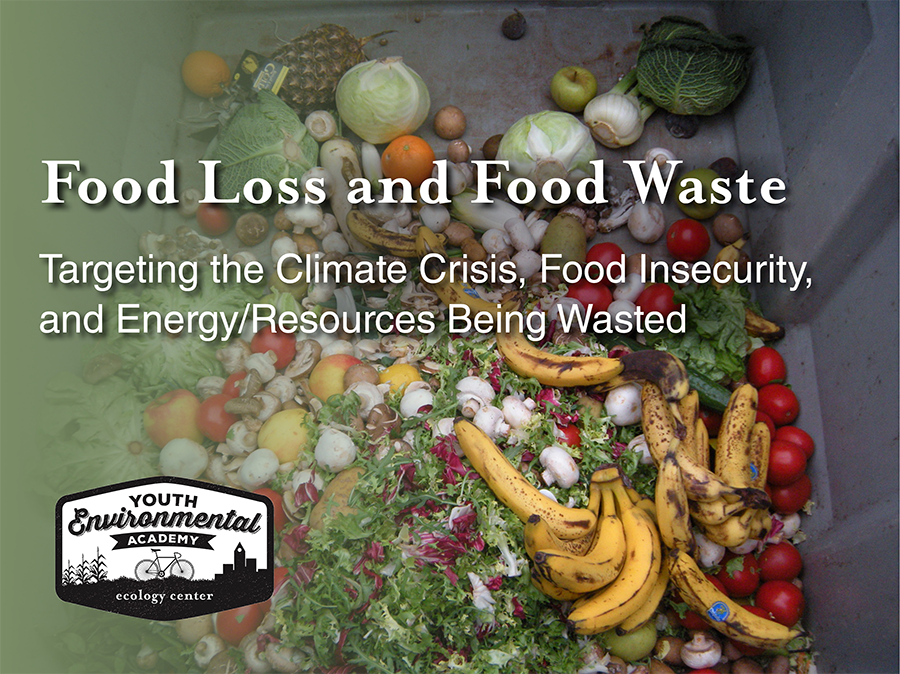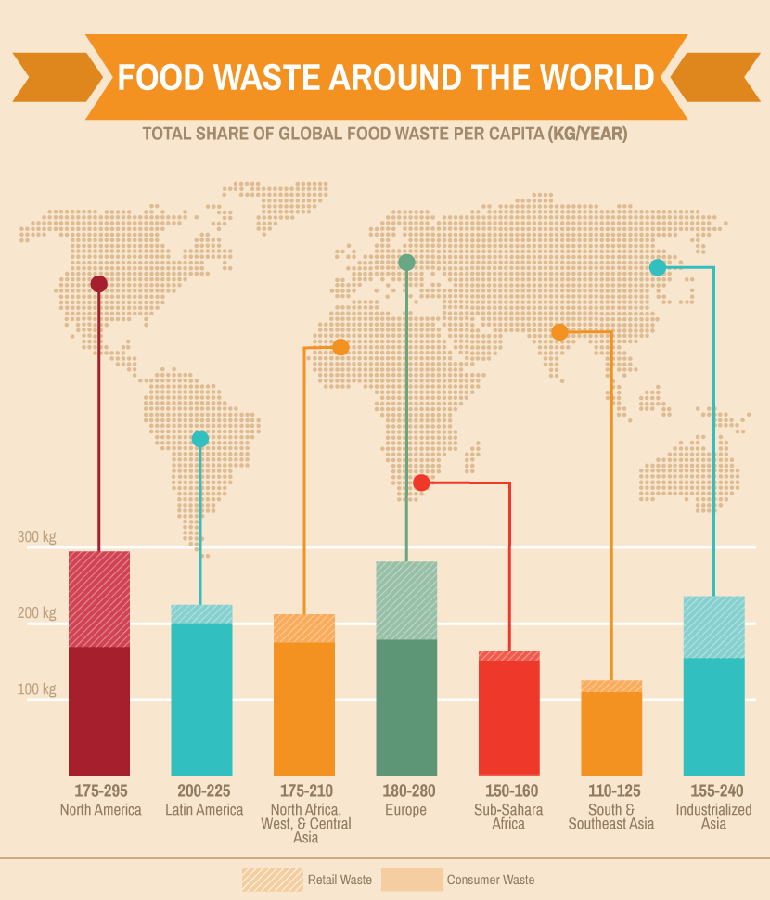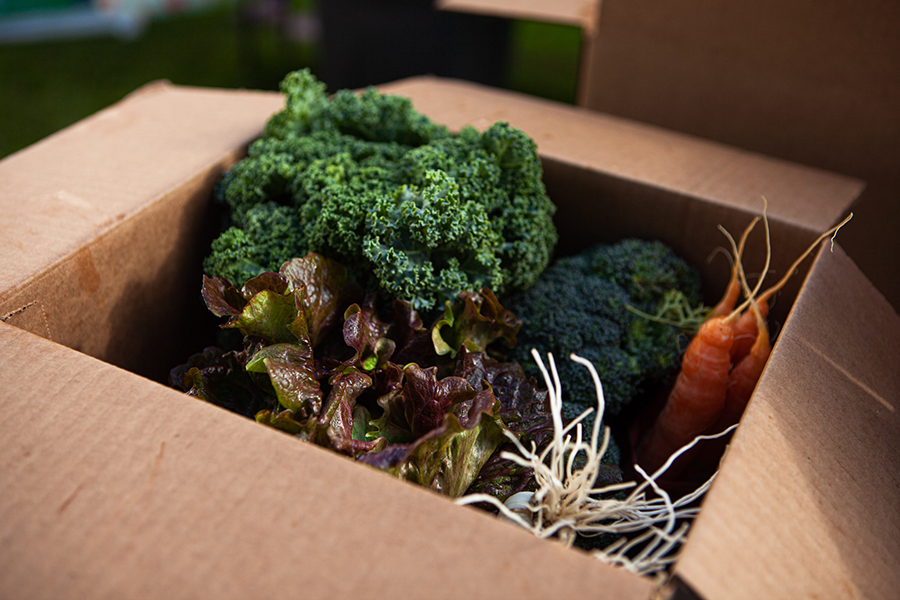 Written by Cydney Devine-Jones and Alishba Shabir, Youth Program Assistants
Written by Cydney Devine-Jones and Alishba Shabir, Youth Program Assistants
Food loss and food waste are rapidly growing issues that affect our environmental, humanitarian, and community concerns. The environmental problems of producing and serving food that no one consumes is a very large global-scale issue. A considerable amount of energy and resources are used to provide the high demand for food and agriculture. “Food and agriculture consume up to 16 percent of U.S. energy and almost half of all U.S. land, and account for 67 percent of the nation’s freshwater use.” However, about 30–40% of the food supply in the United States is wasted.
Since most food waste ends up in landfills, it creates the greenhouse gas, methane. Methane is approximately 30 times more vigorous than carbon dioxide as a heat-trapping gas. It’s been estimated that about 125 to 160 billion pounds of food goes to waste every year, yet much of the food is perfectly edible and nutritious.

Typically, food waste is caused by supermarket chains requiring a perfect appearance of food. In supermarket chains, produce must meet the requirement of being unblemished and perfectly proportioned, which often leaves food that doesn’t fit the standard to be wasted. This is a key example of how food loss plays a substantial part in the food waste crisis.
Food loss occurs as part of the processes that manage the quantity and quality of food before it reaches its last outcome in the food supply chain. Grocery stores tend to have large quantities of food, and waste about 10% of it. In grocery stores, they pile food in overcrowded supermarket displays, where it is bound to get squished. Supermarkets routinely aim to have their shelves fully stocked to prevent loss of customers to competitors. When foods are blemished, shaped differently, or harmed, it results in food loss. Food quality can all change depending on numerous production, distribution, retail, and consumption factors, as well as many other causes.
Food waste is when food is wasted at home or in restaurants. On the consumer’s end, we leave our food in refrigerators for too long, which causes food to go rancid or putrid. Or, at home or in restaurants, we simply discard edible parts that could’ve been consumed.
Actively practicing methods of reducing food waste goes hand in hand with the Ecology Center’s mission of inspiring and building sustainability. At an organizational level, the Ecology Center directly reduces food waste through the Berkeley Farmers’ Markets. “Probably our most direct food waste reduction efforts are around supporting community groups like Food Not Bombs, who consistently pick up “seconds” from our farmers at the end of market (usually Tuesday markets) and either distribute or make meals out of, in order to feed the food insecure folks that live in the area”, the Farmers’ Market Program Manager reports.
At the core of the Youth Farm Box, the produce itself, helps combat food loss. We provide our customers local and seasonal produce that does not require mass transportation, which reduces the risk of the produce going bad in transit. Another way we implement food waste reduction methods is through providing healthy recipes to our customers. Most of the ingredients in the recipes consist of produce the customer gets from the box. For our customers who don’t have much experience cooking with or eating a certain produce item, this provides them with a template to use, so that the produce item doesn’t get forgotten about and eventually wasted.

The majority of wasted food is produced at the industrial level. As with many other issues related to climate change, the issue surrounding wasted food sometimes feels out of reach to solve because of its strong ties with major corporate chains. Although we as individuals can not do much about reducing food loss, as a whole however, there is (luckily) legislation that aims towards reducing the impacts of wasted food. Such legislation include SB 1383 and SB 577.
The intended aim of CA SB 1383 is to reduce methane emissions through reducing the amount of organic waste that end up in landfills by 75% of 2014 levels by the year 2025. A more comprehensive review of SB 1383 can be found at: https://www.calrecycle.ca.gov/organics/slcp
The other, CA SB 577 gives public school cafeterias the right to donate unopened prepackaged food, whole produce, and milk to charitable nonprofits or food banks.
Some organizations and efforts that advocate for food recovery are: StopWaste, Half Lemons, Berkeley Food Bank, Food Not Bombs, and Food Runners.
The food that is wasted at the household level has a lot of potential to be reduced. There are many practices that you can do at home to reduce the food waste in your household.
5 Tips for Reducing Food Waste At Home:
- Make a list before shopping — This method makes it so that you are not buying too much produce or too many items of produce.
- Store your produce in the right place — If a product is stored in the wrong place, it could go bad quicker. By storing produce items in the right place, you can ensure that it stays as good as it can. Here is a storage guide that is useful and does not use plastic.
- Have sections/eat first signs — If you have leftovers that you know will be going bad soon, you can aim to prioritize eating those first. This could also apply to produce items that could go bad quicker than others.
- Utilize all parts of your fruits and vegetables — Carrot stems. Watermelon rind. Broccoli stalks. Onion peels.There are numerous ways to use parts of produce. Get creative, you might really enjoy the outcome!
- Use the Half Lemons App — The mobile app prompts users to insert ingredients that they have on hand, and gives them recipes they can utilize those ingredients in.
Food waste is a problem that needs everyone’s help on a corporation level and community level. Working together and providing solutions to fixing the food waste crisis is the first next step to targeting the climate crisis, food insecurity, and the large amounts of energy/resources being wasted. With millions of people worldwide suffering from malnutrition and undernourishment, it is critical that we make the most of the food we have instead of wasting it. The amount of food wasted in Europe alone would be enough to feed 200 million hungry people. Targeting the food waste complication allows many other tangled connecting issues to be resolved. We must respect food as the important commodity that it is!




That’s a really essential point you make; we all know that many individuals don’t receive two meals a day and instead eat fast food. I believe people should consider this and try not to eat fast food.